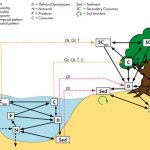In this blogpost, Ralf Schulz talks about a recent review paper summarizing the newest literature on how anthropogenic stressors, such as pollutants, invasive species and hydromorphological changes in aquatic ecosystems affect the aquatic-terrestrial ecosystem coupling and particularly the food webs in terrestrial recipient food webs.
Continue readingA synthesis of research related to aquatic-terrestrial coupling through emergence-mediated contaminant transfer







